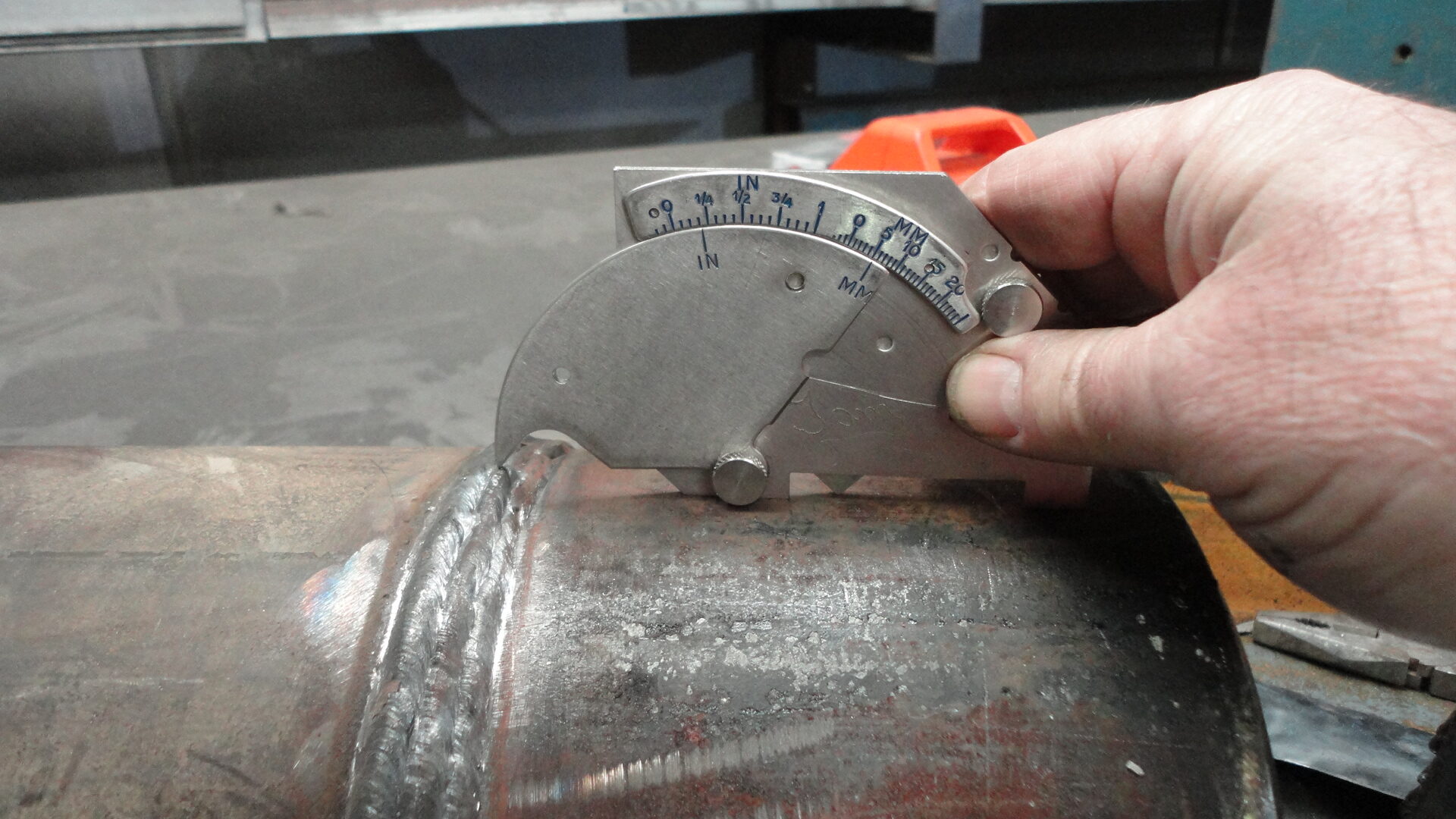Top Factors to Pick Professional Welding Inspection Milwaukee Services
Wiki Article

Exploring the Various Techniques and Criteria of Welding Inspection for Getting Compliance and Reliability in Design Applications
The value of welding assessment in engineering applications can not be overemphasized, as it works as an essential safeguard for guaranteeing structural stability and compliance with sector requirements. Different techniques, including visual inspection and advanced non-destructive testing methods, supply vital understandings right into the top quality of welds. Adherence to established regulative criteria such as those from AWS and ASME establishes a structure for accountability and quality. Nonetheless, the landscape of welding evaluation is consistently developing, motivating a closer evaluation of arising techniques and their implications for design integrity. What might these advancements require for future projects?Relevance of Welding Evaluation
Welding examination plays a vital duty in making sure the honesty and security of welded structures. This process includes the methodical evaluation of welds to verify compliance with predetermined criteria and requirements. The relevance of welding assessment can not be overstated, as it works as a secure against potential failings that can arise from insufficient welding techniques. Via rigorous examination, flaws such as splits, gaps, and insufficient fusion can be recognized early, consequently avoiding devastating failings that might result in architectural collapse or security hazards.Moreover, welding examination is vital for keeping high quality assurance throughout the welding process. It makes certain that the welds satisfy the essential mechanical and physical properties needed for their desired applications. Normal evaluations also cultivate a culture of accountability and continual renovation within welding operations, encouraging adherence to ideal practices and industry requirements.
In regulated sectors such as production, building and construction, and aerospace, rigid welding assessment procedures are mandated to abide by lawful and safety requirements. Ultimately, efficient welding inspection not only shields human life and residential or commercial property yet also boosts the longevity and dependability of welded structures, making it an important aspect of design and construction.

Usual Welding Inspection Approaches
A selection of examination techniques are utilized to evaluate the quality and honesty of welds, each customized to discover particular types of defects. Among one of the most typical techniques is visual assessment, which includes an extensive evaluation of the weld surface to identify noticeable imperfections such as fractures, undercuts, and inadequate fusion. This method is usually the very first step in the inspection procedure because of its simpleness and cost-effectiveness.One more widely utilized method is radiographic examination, where X-rays or gamma rays permeate the weld to reveal interior problems. This technique is specifically efficient for detecting porosity and incorporations within the weld product. Likewise, ultrasonic screening utilizes high-frequency acoustic waves to identify inner defects, giving a thorough analysis of the weld's integrity.
Furthermore, magnetic fragment evaluation is made use of for ferromagnetic materials, enabling for the detection of surface area and near-surface flaws by applying electromagnetic fields and observing bit patterns. Color penetrant testing includes using a fluid color to the weld surface area, disclosing cracks and other stoppages upon inspection (Welding Inspection Milwaukee). Each of these techniques plays a vital duty in ensuring weld quality and compliance with market requirements
Non-Destructive Checking Strategies
Non-destructive screening (NDT) strategies are essential tools in the assessment of weld quality, allowing inspectors to assess the stability of welded joints without triggering damage to the materials. Different NDT techniques are employed to identify potential defects, guaranteeing that welds satisfy the needed requirements for security and performance.One of one of the most widespread strategies is ultrasonic screening (UT), which makes use of high-frequency audio waves to detect internal defects such as cracks or spaces. Radiographic screening (RT) uses X-rays or gamma rays to produce photos of welds, revealing any type of interruptions within the material. Magnetic particle screening (MT) is reliable for identifying surface area and near-surface problems in ferromagnetic materials via the application of magnetic areas and contrasting bits.
Liquid penetrant screening (PT) is an additional commonly used method that involves applying a color to the surface area of the weld, which permeates into any splits, making them noticeable under ultraviolet light. Each of these methods supplies distinct advantages and constraints, and the selection of a suitable technique is crucial to achieving view accurate assessments of weld stability. Eventually, the execution of NDT methods significantly adds to the reliability and safety and security of engineering applications.

Regulatory Requirements and Compliance
In the realm of welding examination, adherence to regulatory criteria and compliance is vital to ensure the security and integrity of welded frameworks (Welding Inspection Milwaukee). Numerous organizations, consisting of the American Welding Culture (AWS), the American Society of Mechanical Designers (ASME), and the International Organization for Standardization (ISO), have actually established guidelines that control welding techniques and evaluation procedures. These requirements give a framework for high quality assurance, detailing the essential qualifications for inspectors and the approaches for evaluating weld stabilityConformity with these governing criteria not just enhances the structural stability of bonded settings up yet additionally mitigates risks connected with failings, which can have tragic consequences. Evaluations need to be executed making use of check these guys out defined treatments, consisting of visual, ultrasonic, and radiographic techniques, to make certain that welds fulfill defined criteria.
Furthermore, adherence to these standards is often called for by law, especially in industries such as aerospace, building and construction, and manufacturing. Routine audits and accreditations are vital to maintain compliance, thereby promoting a society of security and high quality within companies. Eventually, regulative standards and conformity serve as the foundation of reliable welding examination practices, making certain that engineered frameworks meet both efficiency expectations and security needs.
Best Practices for Welding Examination
While keeping compliance with regulative standards is vital, implementing finest methods for welding inspection additionally boosts the safety and stability of bonded structures. Reliable welding examination begins with detailed planning, which includes understanding the particular needs of each task and guaranteeing assessors are trained in suitable approaches and standards.
Utilizing a detailed examination checklist aids to guarantee all important facets are assessed, such as weld size, penetration, and visual problems. Non-destructive screening (NDT) strategies, such as ultrasonic or radiographic testing, should be employed where ideal, providing a more extensive examination of weld high quality without jeopardizing the honesty of the materials.
Documentation plays a considerable function in best practices; maintaining exact documents of examinations, consisting of pictures, examination results, and conformity records, ensures accountability and promotes future assessments. In addition, cultivating a culture of open interaction in between examiners and welders can cause early recognition of possible problems, promoting immediate rehabilitative activities.
Verdict
In summary, the execution of strenuous welding assessment methods and adherence to established standards are vital for making certain conformity and reliability in design applications - Welding Inspection Milwaukee. Methods such as visual examination, radiographic testing, and ultrasonic screening act as critical devices in determining defects and keeping high quality assurance. By cultivating a society of liability and quality, organizations can boost the integrity and long life of welded frameworks, ultimately adding to the safety and security and effectiveness of engineering jobs
Numerous techniques, consisting of visual inspection and advanced non-destructive screening methods, offer essential insights right into the high quality of welds.Welding evaluation plays an important function in have a peek at this site making certain the integrity and safety and security of welded frameworks.A selection of examination techniques are employed to analyze the top quality and stability of welds, each tailored to identify certain types of problems.Another extensively made use of technique is radiographic assessment, where X-rays or gamma rays permeate the weld to reveal internal problems.In the world of welding inspection, adherence to regulatory standards and compliance is critical to make sure the security and reliability of bonded structures.
Report this wiki page